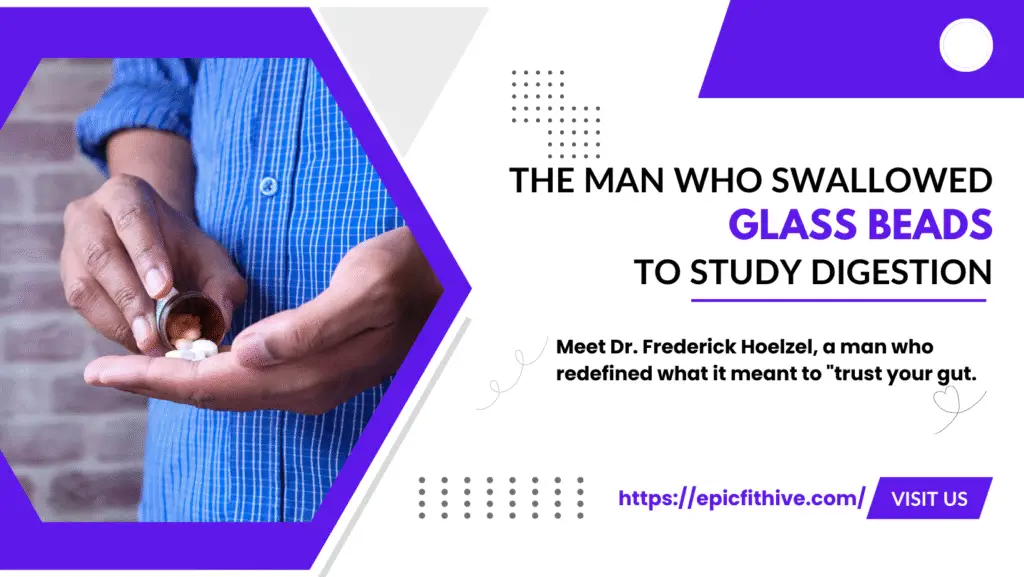Meet Dr. Frederick Hoelzel, the man who swallowed glass beads to study digestion. A man who redefined what it meant to “trust your gut.” Back in the early 20th century, Dr. Hoelzel wasn’t your average physiologist. While others used lab rats and test tubes, he turned his own body into a scientific playground. Why? To better understand how our digestive system processes different substances.
In a series of bold (and, honestly, pretty bizarre) self-experiments, Hoelzel swallowed objects that most of us wouldn’t dare to touch, let alone eat—glass beads, rubber tubing, even surgical cotton. He did this not out of recklessness, but out of a deep desire to answer fundamental questions: How does the human gut deal with indigestible materials? How long do they take to pass through? What happens in the process?
And surprisingly… he survived just fine.
His work helped shape our understanding of gastrointestinal function and intestinal transit time. While his methods were unconventional, his dedication gave researchers new insights into how our bodies handle different materials — both digestible and not.
What Can We Learn from Dr. Hoelzel?
Dr. Hoelzel’s story is less about eating strange things and more about the value of curiosity, resilience, and pushing boundaries in the name of science. But it’s also a reminder of what not to do at home — no matter how curious you get!

Health Tips Inspired by the Human Guinea Pig:
- Know what you’re putting in your body: Whether it’s food, supplements, or medications, always make sure it’s safe and appropriate for your needs.
- Fiber is your friend: Hoelzel showed us that the digestive tract has limits. A healthy gut thrives on natural fiber — think fruits, veggies, and whole grains — not surgical cotton!
- Listen to your gut — literally: If you’re feeling discomfort, bloating, or irregular digestion, don’t ignore it. Your digestive system is trying to tell you something.
- Curiosity is great — but safety first: Exploration and experimentation are how science grows, but always in controlled, informed ways. Leave the extreme self-tests to the history books.
Science sometimes takes unexpected turns — and Dr. Hoelzel’s journey is a perfect example of how curiosity can lead to big breakthroughs, even if it means swallowing a few glass beads along the way.